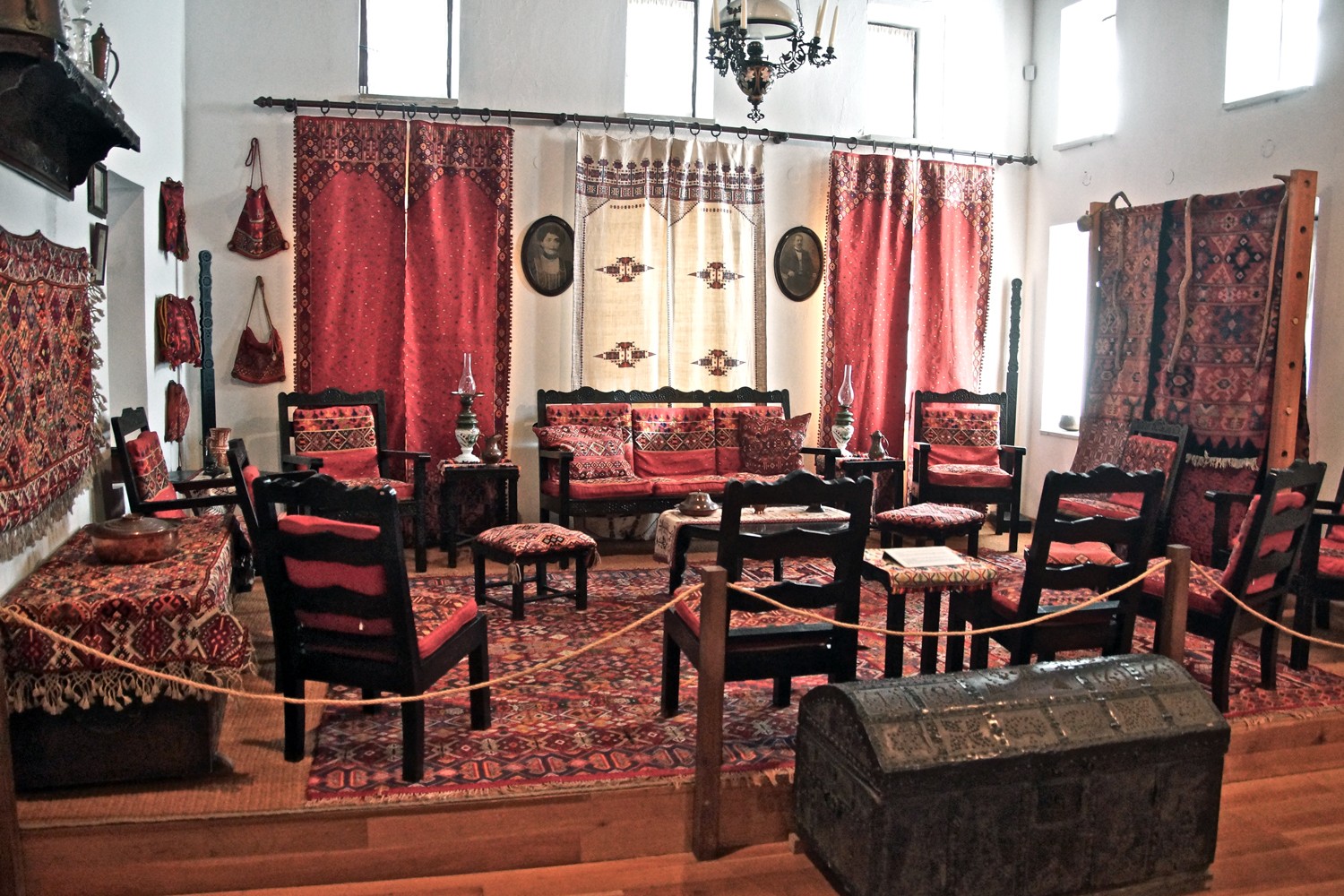Historical and Folk Art Museum of Réthymnon

For insight into how the islanders once lived, tourists should visit this small museum in a typical 17th-century Venetian town house with an internal courtyard garden. Displayed in five rooms, the collection includes beautiful textiles, including woven fabrics, embroidery, and lacework, as well as pottery, baskets, weapons, coins, photographs, and maps. There are also mock-ups of traditional craftsmen’s workshops and businesses, such as a blacksmith’s, a potter’s, a weaver’s, and a baker’s.
In Rethymnon, the beautiful music and the making of the traditional Cretan lyra can be discovered at the Stagakis Museum.
For three generations, the Stagakis family has “created” music special to Crete. It started with Manolis Stagakis. He began making the pear-shaped, three-stringed bowed musical instrument called the Cretan lyra, and his quality craftsmanship throughout his career has earned him a name in Crete.
Three Generations
Dimitris’ son Manolis took on the profession of making the Cretan lyra as well. Like his father, he creates each piece from scratch. Using quality wood and materials, he brings each unique lyra to life.
Manolis’ son, who is named Dimitris is also taking on the knowledge his grandfather passed down to his father.
The Cretan Lyra
The lyra’s sounds are synonymous with Crete and other islands in Greece. What makes the Cretan lyra special is that is still widely played today, the most popular surviving form of the medieval Byzantine lyra. In fact, Dimitris Stagakis is credited with making the first modern form of the lyra in the 1940s.
The Stagakis family has made more than 4,500 lyra instruments to date. Their handcrafted works are known for their amazing sound output and their beautiful designs. Some of the best Cretan musicians play Stagakis lyras.
Visit the Stagakis Museum
At the Stagakis Museum, you can find a small permanent exhibition of what the Stagakis family has accomplished over 65 years and learn more about the lyra and other Greek instruments. There are also many examples of Cretan lyra and you can admire some recently finished masterpieces. Here, you can also learn about other stringed instruments associated with Crete including the mandola, bouzouki and tzuras.
If you happen to be at the museum when Manolis and his son Dimitris are there, you may be invited to watch them do what they do best – creating these beautiful instruments. Sometimes, there will be Cretan musicians around who will be playing the instruments and singing together. You’ll be in on a mini Cretan concert!
While you are taking a day trip to Rethymnon’s old town you can plan to visit the Stagakis museum and workshop. For more information, visit the website: http://www.stagakis-manolis.gr/
The Archaeological Museum in Rethymno Town, Crete: The Archaeological Museum of Rethymnon was founded in 1887 by the Society of Friends of Education. Since 1991, the museum is housed in the Pentagon bastion opposite the main entrance of Fortezza, while the gift shop of the museum is housed in Lotzia. The museum hosts findings from various ancient sites, caves, and excavations all over the prefecture of Rethymnon Crete.
These findings date from the Late Neolithic and Proto-Minoan times till the late Roman period. In particular, the exhibits include vessels, tools, figurines, collections of coins, weapons, helmets, ceramics, jewelry, marble statues, stele from ancient monuments, columns from temples, pieces of daily use and many other items connected with life in the ancient times. The exhibits are placed in chronological order and by excavation site.
For insight into how the islanders once lived, tourists should visit this small museum in a typical 17th-century Venetian town house with an internal courtyard garden. Displayed in five rooms, the collection includes beautiful textiles, including woven fabrics, embroidery, and lacework, as well as pottery, baskets, weapons, coins, photographs, and maps. There are also mock-ups of traditional craftsmen’s workshops and businesses, such as a blacksmith’s, a potter’s, a weaver’s, and a baker’s.
SHARE:
